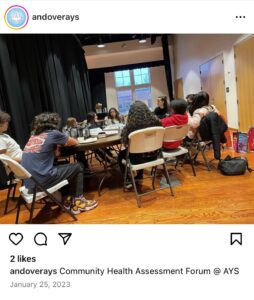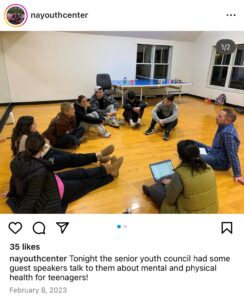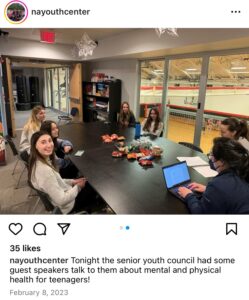Cities and towns approach HRiA’s Community Health Improvement (CHI) Team with specific community needs in mind. HRiA’s approach to assessment and planning processes meets the needs of our clients while also centering the voices of those most impacted by an issue. This blog post takes a closer look at the approaches we used in our CHI work with the towns featured in this impact story.
Background
Leaders in the neighboring towns of Andover and North Andover, Massachusetts knew youth mental health was a key concern in both communities. Using funds from the American Rescue Plan Act (ARPA), leaders asked HRiA for a joint community health assessment (CHA) and community health implementation plan (CHIP). Youth mental health was on the list of topics to explore.
Approach
After reviewing data and speaking with local leaders, HRiA confirmed the concern about youth mental health. Our approach, centered in our Health Equity Framework, considers the voices not at the table. In this case, our team worked with local leaders to engage young people for whom mental health was a concern. HRiA spoke with youth to hear the issues most impacting their lives and to understand the changes they wanted to see in their communities.
Impact
HRiA heard from young people in two formats—focus groups and key informant interviews. In focus groups, young people shared their experiences with mental and behavioral health. Of this project’s nine focus groups, five included youth or parents of youth. Six of 17 interviewees held experience or expertise in working with youth. These experiences later informed each town’s community health improvement plan.
In place of a lengthy report, the HRiA Team developed one-page infographics for each of the three priority areas identified by youth and adults during the assessment process. The towns shared these digestible findings on their websites. Abby Atkins, Managing Director of Community Health Assessment, commented on this approach: “The infographics highlighted key data and plan elements so the towns can easily communicate the process, priorities, and plans for the future.”
Following the assessment, HRiA and town residents—including youth—collaboratively developed a shared three-year community health improvement plan. They also created a detailed annual action plan to guide efforts in the first year of plan implementation.
Reflections
This collaborative endeavor demonstrates the drivers behind some of our key approaches. Below, we reflect on how this project benefited from amplifying voices, diverse perspectives, and collaboration.
- Amplifying Voices. Youth, school officials, and parents shared their experiences with the pressure to succeed, the impact of the COVID-19 pandemic, and the influence of social media. Based on these findings, members of the planning teams developed objectives to normalize and increase access to mental health support. Hearing directly from those most impacted by the issues helped the towns craft short- and long-term plans to address their most salient community needs.
- Diverse Perspectives. We encourage our HRiA staff and supporting teams to bring their unique identities, geographies, skills, and experiences to all projects. In addition to strategic support, staff on this project brought experiences of working with youth, exploring health inequities, and a focus on mental health. Diversity within the project team improves results by reducing the potential for groupthink and bias.
- Collaboration. We define collaboration as intentionally and respectfully leading, partnering, and following to strengthen relationships, uplift different voices, and build trust. As a partner, we supported the collaboration between the towns of Andover and North Andover through a combination of advisory, assessment, and planning services. We followed each town’s lead as they finalized community stakeholders to engage in the assessment and planning processes.
Rather than providing standardized strategies or predetermined answers, HRiA brings expertise in facilitation, listening, and empathy to ensure we are centering the voices of those most impacted. Our strategies are thoughtfully designed to amplify the voices of those closest to the issues, strengthen relationships, and co-create healthy, equitable communities where all can thrive.
Learn more about the Andover/North Andover CHA-CHIP in this impact story.



